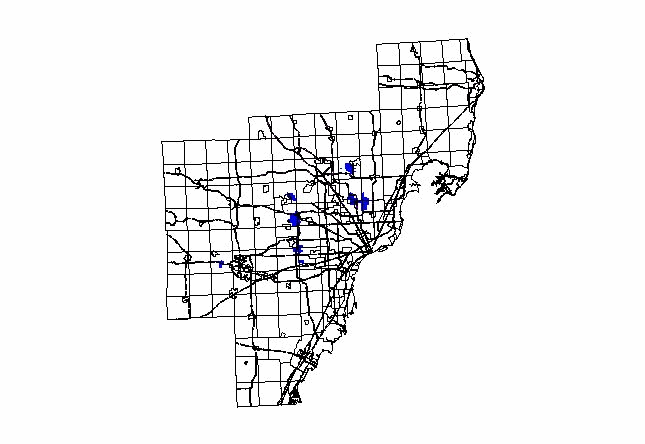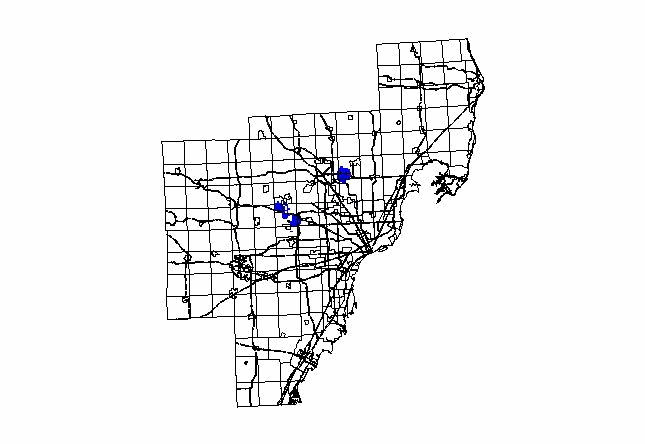The Definition of Industrial Land Use:
-
This refers to the industrial and industrial parks
categories of SEMCOG's land use coverages.
-
Industrial includes a wide array of uses from light
manufacturing and industrial parks to heavy manufacturing plants. Identification
of light industries - those focused on design, assembly, finishing, and
packaging of products - can often be based on the type of building, parking,
and shipping arrangements. Light industrial areas may be, but are not necessarily,
directly in contact with urban areas; many are now found at airports or
in relatively open country. Heavy industries use raw materials such as
iron ore, lumber, or coal. Included are steel mills, pulp or lumber mills,
oil refineries, chemical plants and brick making plants. Stockpoles of
raw materials, large power sources, and waste product disposal areas are
usually visible, along with transportation facilities capable of handling
heavy materials.
-
Industrial parks refer to areas set aside within the
community and specifically provided with the necessary community facilities
such as roads, water and sewer lines, power to support industrial growth
and development.
|


